In the wild world of pickleball, where opponents fiercely battle it out on the court, there is a constant debate that stirs up excitement and ignites heated discussions: 13mm paddles or 16mm paddles? These seemingly innocent variations in thickness have sparked a pickleball revolution, with players passionately endorsing their preferred paddle like secret society members. But what exactly is the difference between the two? Brace yourself as you dive into the thrilling world of pickleball paddle thickness and explore which thickness reigns supreme in this epic showdown. Buckle up, pickleball enthusiasts, because it’s about to get intense!
7 Things to Look For in a Pickleball Paddle
Thickness
The thickness of a pickleball paddle is an important factor to consider. It essentially affects the weight and durability of the paddle. Thicker paddles tend to be heavier, which can make it more difficult to maneuver on the court. However, they also provide more power and stability for hitting shots. On the other hand, thinner paddles are lighter and easier to control, but may not have as much power.
Weight
Weight is another crucial aspect when choosing a pickleball paddle. Similar to thickness, the weight of a paddle can affect its maneuverability and power.
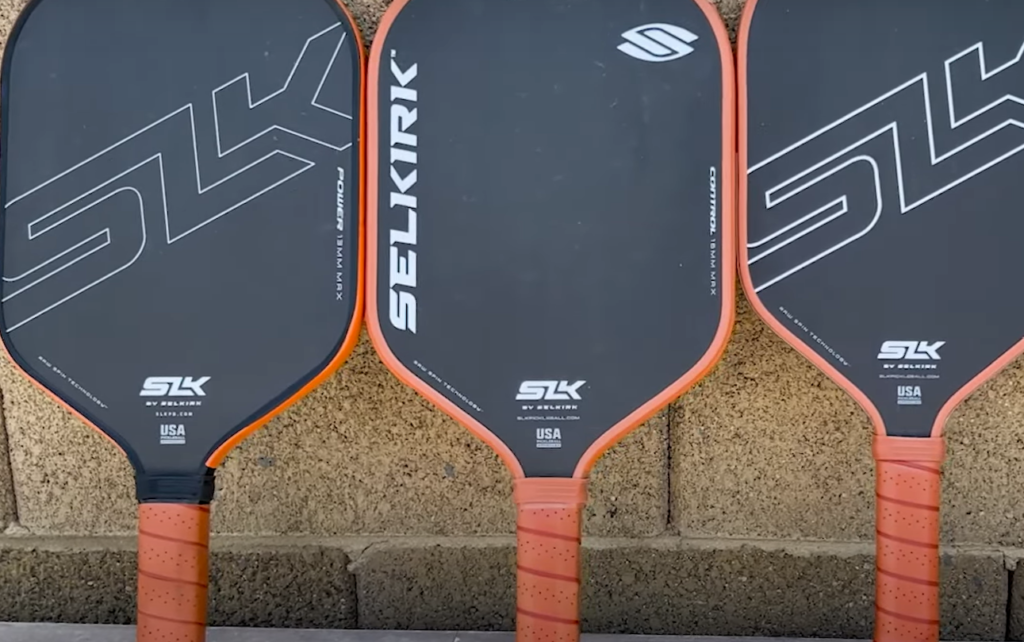
A heavier paddle can generate more force behind shots, while a lighter one allows for quicker reactions and control. The general weight range for a pickleball paddle is between 6-14 ounces, so make sure to try out different weights and find one that works best for you.
Core Material
The core material of a pickleball paddle plays a significant role in its performance. The most common materials used are polymer, aluminum, and graphite. Polymer cores tend to be the softest and provide more control over shots. Aluminum cores offer a good balance between power and control. Graphite cores are known for their stiffness and ability to generate power, but they can also be more difficult to control. It’s essential to understand the different core materials and how they can impact your game before making a decision.
Handle Length and Shape
The handle length and shape are often overlooked when choosing a pickleball paddle, but they can make a big difference in your gameplay. A longer handle provides more reach and leverage for shots, while a shorter one allows for quicker reactions. The shape of the handle can also affect your grip and comfort level. Some paddles have rectangular handles, while others have rounder ones. It’s important to try out different handle lengths and shapes to find the one that feels most natural for you.
Grip Size
Having the right grip size is crucial for a comfortable and secure hold on your pickleball paddle. If the grip is too small, it can be challenging to control the paddle, leading to mishits and errors. On the other hand, if the grip is too big, it can strain your hand and lead to fatigue. The best way to determine the right grip size for you is to try out different paddles with varying grip sizes and see which one feels most comfortable.
Surface Texture
The surface texture of a pickleball paddle can impact the spin and control of shots. A smooth surface allows for more power but less spin, while a textured surface can create more spin and control but may sacrifice some power.
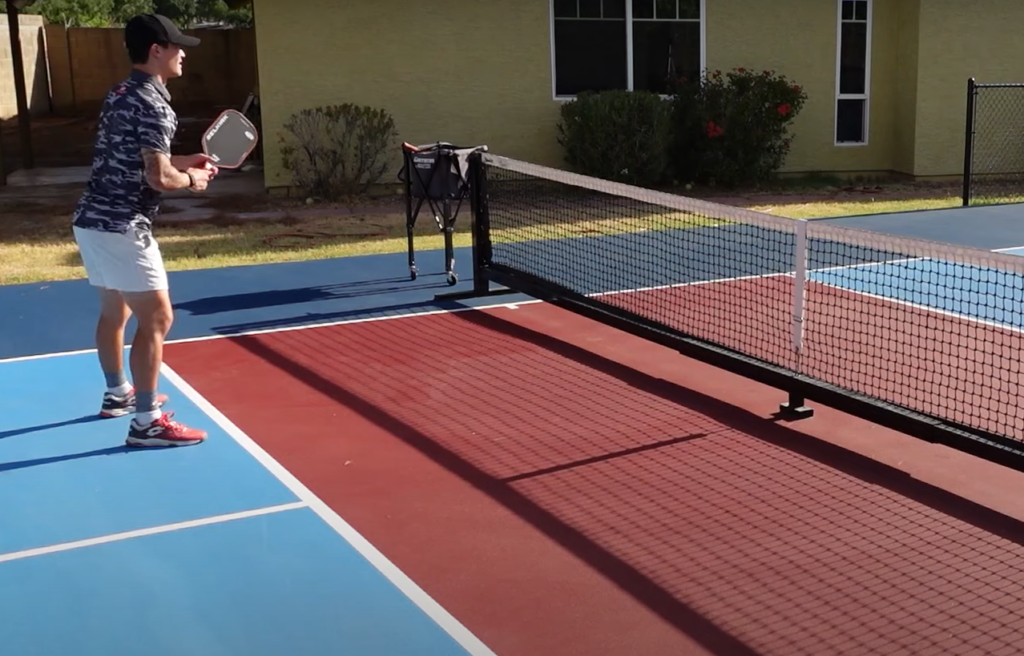
Some paddles also have a rough or sandpaper-like texture that can add even more spin to shots. Consider your playing style and what you value most in your shots when choosing the surface texture of your pickleball paddle.
Price and Warranty
Last but not least, the price and warranty of a pickleball paddle are essential factors to consider.
It’s crucial to find a balance between quality and price that aligns with your budget and playing needs. Additionally, make sure to check for any warranty options offered by the manufacturer to ensure your investment is protected [1].What is a Pickleball Paddle’s Core Thickness?
Pickleball Paddles with 13 mm Thin Core
Pickleball paddles come in a variety of shapes, sizes, weights, and core thicknesses. One important aspect to consider when purchasing a pickleball paddle is the core thickness. The core is an essential component of any pickleball paddle as it determines the overall weight and stiffness of the paddle.
In general, thicker cores tend to offer more power and less control, while thinner cores provide more control and less power. However, this is not always the case as other factors such as paddle shape, weight distribution, and surface material also play a significant role in determining the overall performance of a paddle.
One type of pickleball paddle with a thin core is the 13 mm paddle. This refers to the thickness of the core at its thickest point. These paddles are known for their exceptional control and touch on the ball. They offer a unique mix of power and precision, making them a popular choice among players.
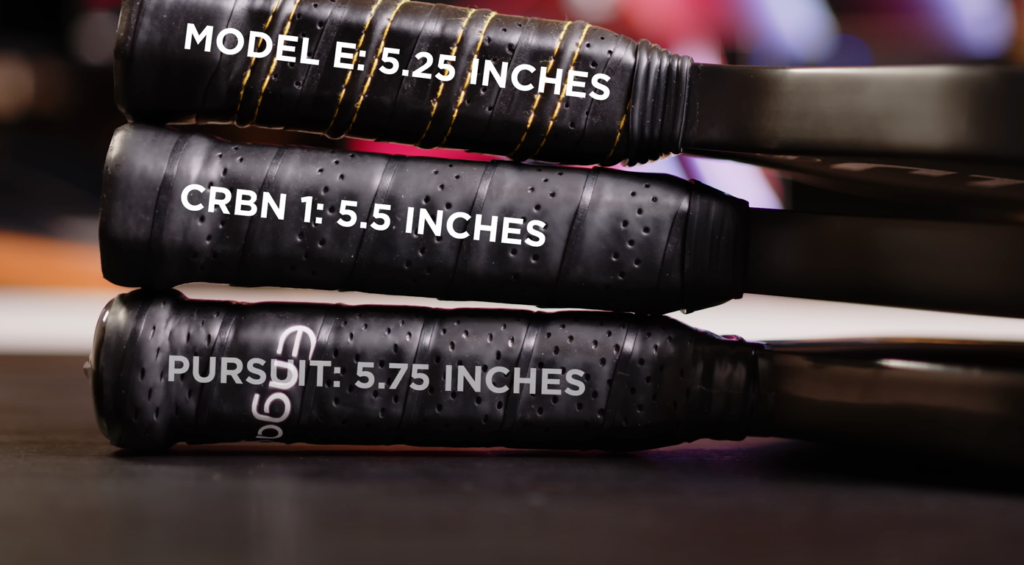
The thin core allows for better maneuverability and quicker reaction time, which is crucial in fast-paced pickleball games. The reduced weight also makes it easier to swing the paddle with less effort, reducing fatigue and allowing players to play for longer periods.
Benefits of using 13 mm Thin Core Paddles
There are several benefits to using a pickleball paddle with a 13 mm thin core. Some of these include:
- Enhanced control: As mentioned earlier, thinner cores provide better control over the ball. This is especially useful when performing delicate shots that require precision and finesse.
- Quicker reactions: With a thinner core, the paddle is easier to maneuver, allowing players to react quickly to fast shots and make returns from difficult positions.
- Improved touch on the ball: The thin core allows for more feel and touch on the ball, which can be beneficial in executing drop shots and dinks.
- Reduced weight: Thinner cores result in lighter paddles, making it easier to swing and reducing strain on the arm.
- Better spin: The reduced weight and increased maneuverability of thin core paddles also make it easier to generate spin on shots. This can be advantageous when trying to place shots in specific areas or adding extra spin for defensive purposes.
Thick Pickleball Paddles With 16 mm Thick Core
On the other end of the spectrum, there are thick pickleball paddles with a 16 mm core. These paddles are often preferred by players who prioritize power over control. The thicker core provides more rigidity, resulting in harder shots and more power.
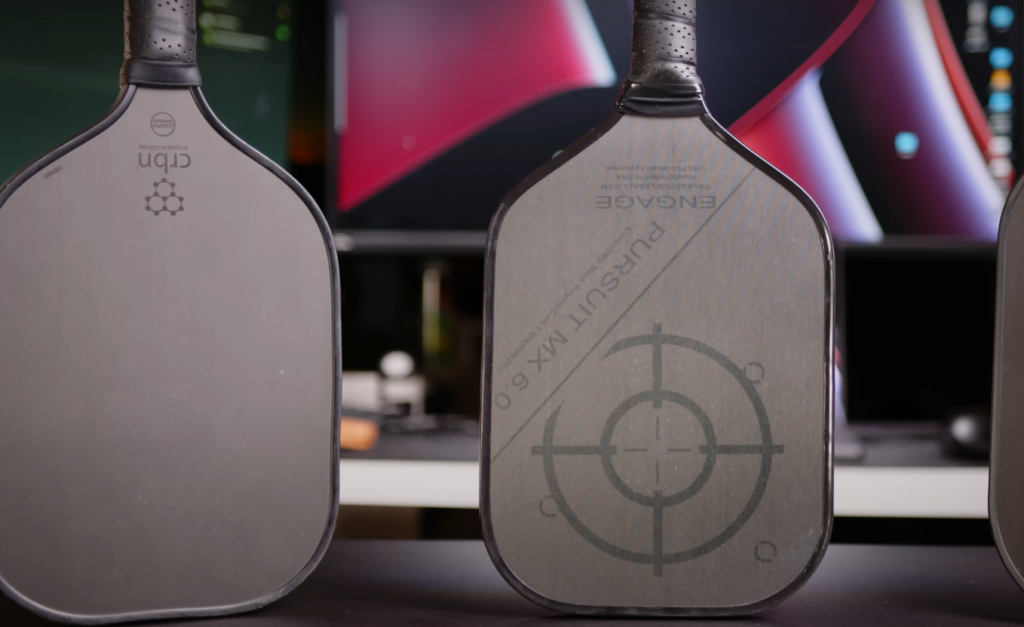
However, it’s important to note that the increased power comes with some trade-offs. The added weight and stiffness of these paddles can make them more challenging to maneuver, especially for players who rely on quick reactions and agility. The extra weight can also lead to more strain on the arm during extended play, requiring players to have a higher level of strength and endurance.
Despite these challenges, some players find that the advantages of the thicker and more powerful paddles outweigh the drawbacks. It ultimately comes down to personal preference and playing style [2].
How to Choose Between 13 mm vs 16 mm Pickleball Paddle
Are you new to the game of pickleball and wondering what paddle size is right for you? If so, then this article is perfect for you!
In pickleball, there are two main sizes of paddles: 13 mm and 16 mm. Both have their own unique features and benefits, but how do you know which one is best for your playing style? In this guide, we will break down the differences between these two sizes and help you make an informed decision on which one to choose.
One of the main differences between a 13 mm and 16 mm pickleball paddle is their weight.
This may seem insignificant, but weight can actually have a big impact on your game.A lighter paddle is easier to maneuver and control, making it ideal for players who prefer a faster-paced game or those with a more finesse style. On the other hand, a heavier paddle can provide more power behind your shots and may be better suited for players who rely on strength and force in their gameplay. On average, a 13 mm paddle weighs around 6-7.5 ounces while a 16 mm paddle weighs around 7.3-8.4 ounces.
Another factor to consider is the surface area of the paddle. A larger surface area means you have more room for error and can hit shots with more power and accuracy. This makes a 16 mm paddle ideal for beginners or those who want more forgiveness in their shots. However, a smaller surface area on a 13 mm paddle can provide more control and precision for advanced players who have already developed their skills.
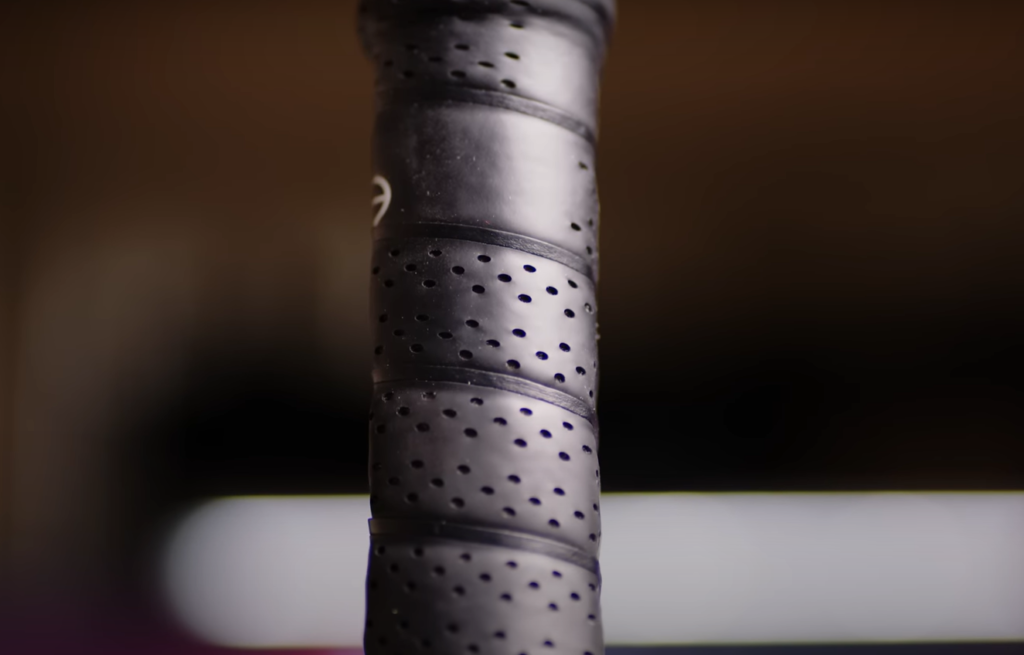
As the name suggests, the main difference between a 13 mm and 16 mm paddle is their thickness. The 16 mm paddle is thicker, which can affect its overall weight and also provide more surface area for hitting the ball.
A thicker paddle typically offers more power and force behind your shots due to its larger sweet spot. However, it may also be harder to control and maneuver compared to a 13 mm paddle.
Another factor to consider when choosing between these two paddle sizes is the grip size. A 16 mm paddle typically has a larger grip size compared to a 13 mm, which may be beneficial for players with bigger hands or those who prefer a firmer grip.
On the other hand, a smaller grip size like 13 mm may be more comfortable for players with smaller hands or those who prefer a looser grip. It ultimately comes down to personal preference and what feels most comfortable for you.
You may not think about this aspect when choosing a pickleball paddle, but the thickness of your paddle can affect the noise level on the court. A 16 mm paddle tends to produce a louder sound when hitting the ball due to its thicker surface.
This may not be a big concern for some players, but it’s important to keep in mind if you frequently play in noise-sensitive areas or with players who are sensitive to loud noises.
Last but not least, price is also a factor to consider when choosing between 13 mm and 16 mm pickleball paddles. Generally, a 13 mm paddle will be less expensive compared to a 16 mm paddle due to its lighter weight and smaller size. On average, the 13-mm paddle can cost around $50-100, while a 16-mm paddle can range from $80-120.
However, keep in mind that price should not be the sole deciding factor when it comes to your paddle choice. It’s important to also consider your playing style and need to ensure you choose the right paddle for you.
FAQ
What should you choose: a 16mm or 13mm pickleball paddle?
When it comes to choosing a pickleball paddle, the most common question is whether to go for a 16mm or a 13mm thickness. The answer to this depends on several factors and personal preferences. The first factor is the player’s playing style. A 16mm paddle offers more power and better control, making it suitable for players who prefer aggressive shots and fast-paced games. On the other hand, a 13mm paddle provides more finesse and touch, making it ideal for players who rely on placement and spin shots.
Another factor to consider is the weight of the paddle. Generally, 16mm paddles tend to be heavier than 13mm paddles. This may not be a significant difference for some players, but for others, it can affect their performance and comfort level on the court. It is essential to try out both types of paddles and see which weight feels more comfortable for you.
Also, keep in mind that the thickness of a paddle affects its durability. A 16mm paddle is more solid and less likely to break or chip compared to a 13mm paddle. However, with advancements in technology, some manufacturers have been able to make durable 13mm paddles as well.
What does 13 mm mean for pickleball paddle?
The measurement of 13mm refers to the thickness of a pickleball paddle. This measurement is taken from the edge of the handle to the top surface of the paddle. A 13mm paddle is considered to be on the thinner side, with most paddles ranging from 8-12 mm in thickness.
The thickness of a pickleball paddle can greatly affect its performance on the court. A 13mm paddle offers more finesse and control, making it suitable for players who rely on placement and spin shots. It also allows for quicker movements and reactions during fast-paced games.
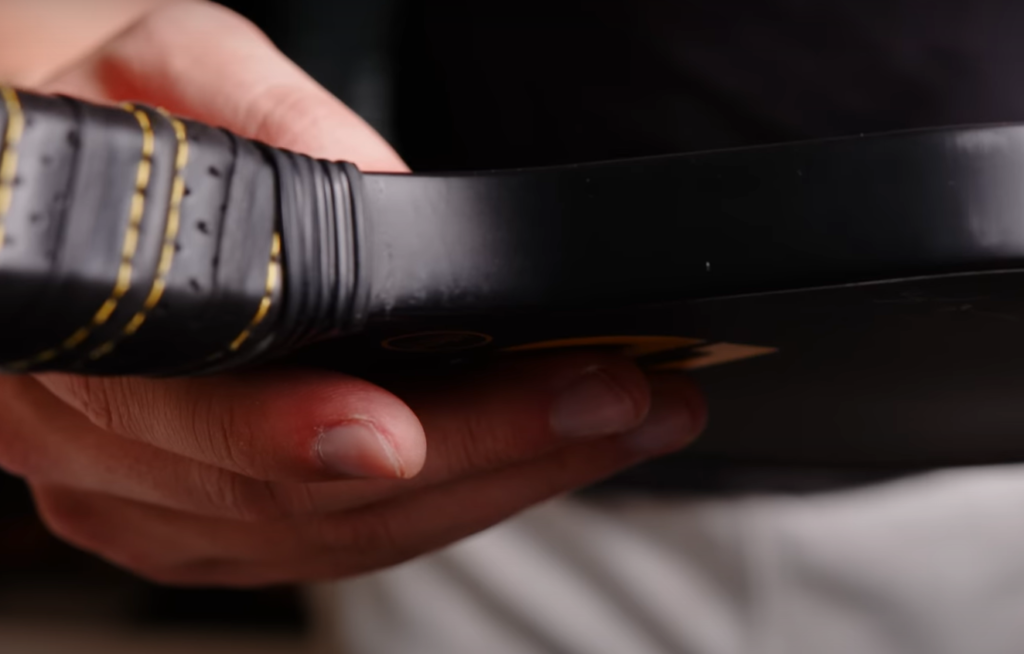
However, a 13mm paddle may not provide as much power as a thicker paddle, such as a 16mm one. It is important to consider your playing style and preferences when choosing the thickness of your pickleball paddle.
What is the difference between 14mm and 16mm paddles?
The main difference between a 14mm and 16mm pickleball paddle is in their thickness. As the name suggests, a 14mm paddle has a thickness of 14 mm, while a 16mm paddle has a thickness of 16 mm.
This may seem like a small difference, but it can greatly impact your gameplay. A 16mm paddle offers more power and control, making it suitable for aggressive shots and fast-paced games. On the other hand, a 14mm paddle provides more finesse and touch, making it ideal for players who rely on placement and spin shots.
The choice between these two thicknesses ultimately comes down to personal preference and playing style. Some players may prefer the extra power of a 16mm paddle, while others may value the finesse of a 14mm paddle. It is important to try out both types and see which one feels more comfortable for you on the court. Additionally, players should also consider their weight preferences as a 16mm paddle tends to be heavier than a 14mm one.
Why does the weight of a pickleball paddle matter?
The weight of a pickleball paddle matters because it can greatly affect a player’s performance on the court. A heavier paddle can provide more power and stability, making it suitable for players who rely on strong shots. However, a heavier paddle can also be tiring to use for extended periods, especially for players with arm or shoulder issues.
On the other hand, a lighter paddle allows for quicker movements and reactions on the court. This makes it ideal for players who prefer finesse shots and quick gameplay. However, a lighter paddle may not offer as much power as a heavier one, and its stability can be affected by strong shots from opponents.
It is essential to find the right balance between weight and performance when choosing a pickleball paddle. Some players may prefer a heavier paddle for more power, while others may opt for a lighter one for better maneuverability. Ultimately, the weight of a paddle depends on personal preference and playing style. Remember to try out different weights to see which feels most comfortable and effective for you on the court.
What is the best grip size for a pickleball paddle?
The best grip size for a pickleball paddle varies from player to player and depends on individual hand sizes and preferences. However, there are general guidelines that can help players choose the right grip size.
To determine the ideal grip size, measure your hand’s length from the base of your palm to the tip of your middle finger. For most adult players, a grip size of 4 1/8 inches to 4 3/8 inches is recommended. However, those with smaller hands may prefer a slightly smaller grip, while those with larger hands may benefit from a larger one.
It is essential to have the right grip size for your pickleball paddle as it can affect your control and comfort on the court. A grip that is too small can cause your hand to slip, while a grip that is too large can tire out your hand and arm quickly. Experiment with different sizes to find the perfect fit for you.
Useful Video: Zane Compares the Franklin 16mm VS 13mm Paddles | Zane Navratil Pickleball
Conclusion Paragraph
Choosing the right thickness, weight, and grip size for your pickleball paddle is crucial in enhancing your performance on the court. It ultimately boils down to personal preference and playing style, but it is essential to consider these factors before making a purchase. Remember to try out different options and see what feels most comfortable and effective for you. With the right pickleball paddle, you can take your game to the next level and enjoy the sport even more. So, it is essential to choose a pickleball paddle that best fits your needs and style of play. Whether it’s a 13mm or 16mm thickness, a lighter or heavier weight, or a specific grip size, finding the perfect combination can greatly enhance your experience and skills in the game.
References:
- https://housepickleball.com/blogs/news/how-to-choose-a-pickleball-paddle
- https://www.selkirk.com/pages/selkirku/pickleball-paddles-core-thickness-explained





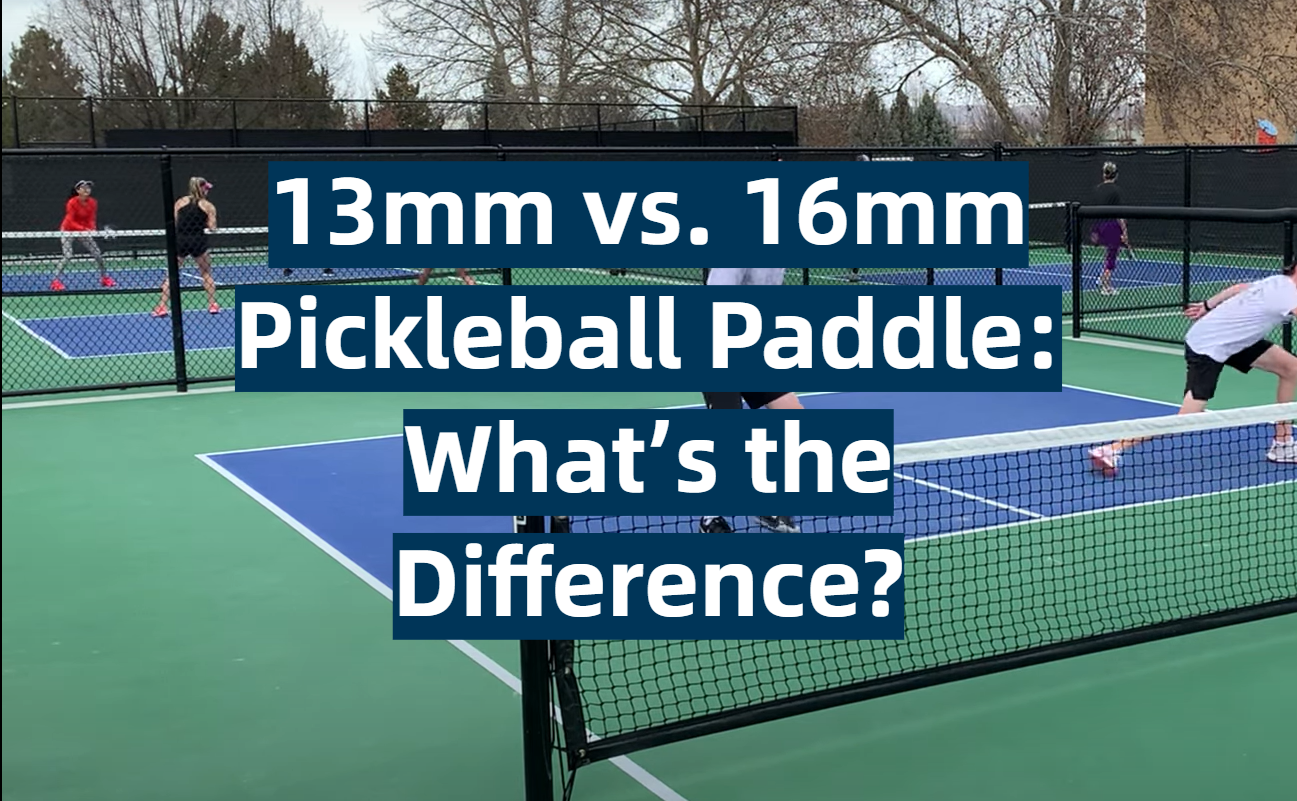

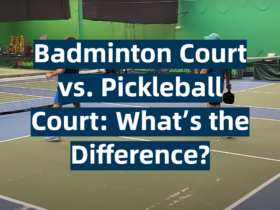
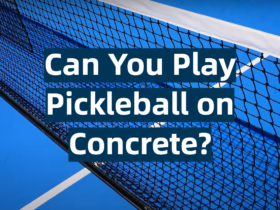
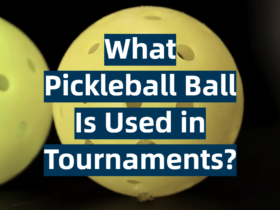
Leave a Review